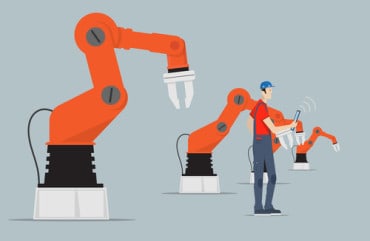
Virtual prototyping, virtual commissioning, and digital twin technologies provide EV makers with the agility to navigate regulatory changes, economic fluctuations, and changing customer preferences, ensuring they remain competitive in today’s dynamic market.
Automakers have long been subject to economic shifts and consumer preference changes. Manufacturers of electric vehicles find these changes have an even more pronounced impact and in much shorter time frames than ever before. As such, they need to be nibble and positioned to rapidly change designs, production operations, supply chains, and more to stay competitive and financially sound. Increasingly, the rate of change they must deal with requires virtual prototyping and digital twin technology.
They are using virtual prototyping to try out new EV designs, production processes, assembly lines, and factory floor plans. And they are using digital twins for a variety of purposes, including making better data-driven decisions about process improvements, design changes, and more.
Meeting changing market conditions with technology
European and U.S. carmakers are under growing pressure as Chinese carmakers have started to export at scale. Additional pressure is coming from a crop of mostly venture capital-backed EV starts-ups. That funding is going into companies that are developing new charging and battery technologies to full-blown autos of their own. There have also been substantial investments in the electric vehicle supply chain.
Bottom line: Things are moving fast. Traditional automakers designing and building EVs are facing new, well-funded competitors. And those investors what immediate results.
On the consumer side of the equation, evolving regulations, new or expiring government financial incentives, and economic shifts can quickly change demand and preferences in the quantity and types of electric vehicles the market needs.
Enter technologies that can help. Virtual prototyping and digital twin technologies allow EV makers to quickly and effectively respond to market changes.
See also: Virtualizing the Automated Assembly Line
Virtual prototyping
Manufacturers have used virtual prototyping of cars and virtual commissioning of production lines, work cells, and factories for years to speed the development and production of traditional internal combustion engine cars.
Now, manufacturers are applying the same technologies to support their EV efforts. Specifically, virtual prototyping and commissioning offer a number of benefits, including:
Accelerated Development Cycles:
- Virtual prototyping allows manufacturers to design, test, and iterate on vehicle models much faster than with physical prototypes. This is crucial for adapting to new regulations that may require design changes on short notice.
- It reduces the cost associated with physical prototypes, as multiple design iterations can be tested virtually without the need for expensive physical builds.
Enhanced Testing and Validation:
- Engineers can perform extensive simulations to test various scenarios, including safety, performance, and compliance with regulatory standards.
- Potential problems can be identified and resolved early in the design process, ensuring that the final product meets all regulatory requirements and market expectations.
Flexibility and Adaptability:
- Virtual prototypes can be quickly adjusted in response to new regulatory changes or market demands, allowing manufacturers to stay compliant and competitive.
- It fosters innovation by allowing engineers to experiment with new ideas and technologies without the constraints of physical prototyping.
Digital twin technology
Digital twins enable detailed simulations and informed decision-making by creating virtual replicas of physical assets. EV automakers can leverage the technology to enable:
Real-Time Monitoring and Predictive Maintenance:
- Digital twin technology provides real-time data on vehicle performance, which can be used to monitor compliance with regulatory standards and to predict maintenance needs.
- By analyzing data from digital twins, manufacturers can enhance vehicle reliability and performance, addressing any issues that could arise due to regulatory changes or economic factors.
Enhanced Customer Experience:
- Digital twins enable personalized vehicle configurations that meet specific market needs and customer preferences, which can be critical when responding to economic shifts.
- They allow manufacturers to manage the entire lifecycle of the vehicle, ensuring it remains compliant and competitive throughout its use.
Informed Decision-Making:
- The vast amount of data collected from digital twins helps manufacturers make informed decisions regarding design, production, and marketing strategies.
- Manufacturers can use digital twins to perform scenario analysis, predicting how new regulations or economic conditions might impact vehicle performance and market acceptance.
Synergies when the technologies are blended
Virtual prototyping and digital twins enable manufacturers to quickly adapt their designs and production processes to comply with new environmental and safety regulations, as well as changing customer preferences.
Together, the technologies help with cost management. How? By reducing the need for physical prototypes and enabling predictive maintenance, these technologies help manufacturers manage costs more effectively.
Additionally, the two technologies allow manufacturers to quickly respond to changes in market demand, adjusting production and design to align with current economic conditions.
There are other benefits of using the technologies. For example, they support continuous improvement and innovation, ensuring that manufacturers can offer high-quality, cutting-edge EVs that meet evolving market demands. They also can help enhance reliability, customization, and improved performance, leading to greater customer satisfaction and loyalty, which is crucial in a competitive market.
Finally, virtual prototyping and digital twin technologies provide EV makers with the agility and tools necessary to navigate regulatory changes, economic fluctuations, and changing customer preferences, ensuring they remain competitive in a dynamic market.







